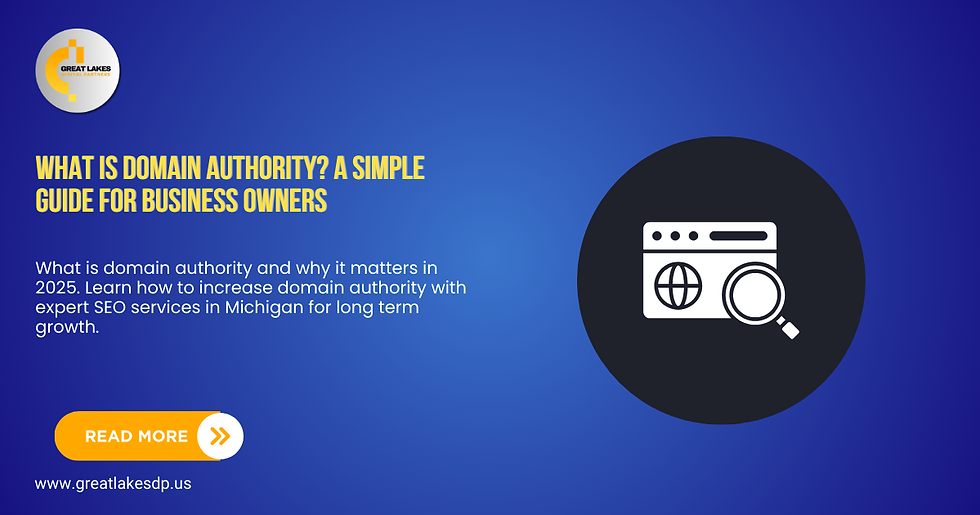Visual Search Optimization: How to Make Your Images SEO-Ready for Google Lens
- Great Lakes
- Jul 22
- 4 min read

Imagine a user points their camera at a product and lands directly on your website. That’s the power of visual search optimization. In 2025, Google Lens handles over 12 billion searches monthly, and brands that optimize their visual content are already seeing click-through rate increases of up to 35%.
If you’re not optimizing your images for visual discovery tools like Google Lens, you're leaving valuable traffic on the table. Here's your step-by-step guide to visual search SEO, made simple, strategic, and actionable.
What Is Visual Search Optimization?
Visual search optimization is the process of enhancing images so that visual tools like Google Lens can recognize, interpret, and index them accurately. Unlike traditional search, where users type keywords, visual search uses images as the query input.
Your product could be discovered when someone photographs a similar item or searches via screenshots. But that’s only possible if your images are optimized correctly.
Why Is It a Game Changer in 2025?
Google Lens dominates visual search, processing more searches than Pinterest and Bing combined.
Mobile-first shopping behavior has accelerated post-2025, with Gen Z users relying on visual search over voice or text.
E-commerce businesses using visual search optimization have reported a 30% increase in mobile conversions.
How to Optimize Your Images for Visual Search in 2025
1. Use Descriptive, Keyword-Rich File Names
Rename “IMG_2025_01.jpg” to something like “brown-leather-wallet-hideandchic.jpg.” This signals context to search engines and improves visual search SEO.
2. Add Alt Text That Matters
Alt text isn’t just for accessibility. It's critical for Google Lens indexing. Use clear, concise language. Example: ❌ “Product image” ✅ “Handcrafted tan leather wallet with zipper by Hide & Chic”
3. Implement Structured Data Markup
Add schema.org/imageObject tags to your images. This allows Google to extract important metadata like product name, color, material, and price. A must for e-commerce.
4. Optimize Image Size and Format
Use WebP or AVIF for faster loading and better resolution. Compress images without compromising quality. Speed is crucial for both SEO Services in Michigan and user experience.
5. Mobile-Responsive Design
Ensure images look perfect on all devices. Over 87% of visual searches happen on mobile. Use responsive image tags like for dynamic resolution loading.
6. Contextual Placement
Place images next to relevant text. This helps search engines understand the image’s relationship with surrounding content. Use captions and nearby keywords like visual search optimization naturally.
7. Submit Image Sitemaps
Don’t leave discovery to chance. Use Google Search Console to submit an image sitemap. This tells Google where your key images live.
8. Use High-Quality Original Images
Avoid stock photography. Unique, crisp images stand out in Google Lens results. Also, aim for consistent branding and backgrounds to maintain recognizability.
How to Optimize for Google Lens in 2025
Rename image files with keywords, write descriptive alt text, use schema markup, and upload high-quality, mobile-friendly original photos. Submit an image sitemap and keep context clear around visuals.
Expert Insight: Don’t Treat Images as Extras
In 2025, images are content. Google treats them like text, and your visual search optimization strategy must reflect that. Every image is an entry point to your site.
Whether you're an online retailer, content creator, or SEO company in Michigan, visuals are your fastest-growing traffic asset.
Final Checklist
✔ Rename files with descriptive keywords ✔ Write informative alt text ✔ Use schema markup ✔ Optimize file size and format ✔ Submit an image sitemap ✔ Ensure responsive design ✔ Add contextual text ✔ Use original, branded images
CTA: Ready to Make Your Images Work for You?
At Great Lakes, we specialize in visual search optimization and help brands leverage tools like Google Lens to drive more traffic, engagement, and conversions. Whether you’re an e-commerce brand or a service business, our tailored SEO Services in Michigan ensure your visuals are seen by the right audience.
FAQs
1. How do I know if Google Lens can see my product images?
You can test your images using the Google Lens app or on desktop by dragging your image into the search bar at images.google.com. If your website appears, it's indexed. If not, you likely need better image SEO.
2. What is the best image format for visual search optimization in 2025?
WebP and AVIF are the most recommended formats due to their small size and high quality. These formats also load faster on mobile, enhancing user experience and SEO.
3. Does image optimization impact Google ranking?
Yes. Google considers image quality, alt text, file names, and page load speed in its ranking algorithm. Well-optimized images can improve both page rank and visibility in visual search results.
4. Can a small business benefit from visual search SEO?
Absolutely. Visual search evens the playing field. High-quality images with proper metadata can outperform big brands if optimized correctly, especially in niche or local searches.
5. Should I hire an SEO company for image SEO?
If you're targeting growth and brand visibility, yes. A seasoned SEO company in Michigan like Great Lakes can implement technical strategies like schema markup, responsive design, and structured sitemaps that ensure your visuals rank high on Google Lens and beyond.











Comments